On Tuesday, November 17, a webinar was presented by Karamba and SAP on PaPM (Profitability and Performance Management). This webinar is available in replay.
But what is SAP PAPM?
SAP Profitability and Performance Management is a tool in SAP’s EPM (performance management) portfolio.
PaPM analyzes the profitability of a company’s products, services, customers or departments using flexible and powerful allocation or calculation mechanisms based on SAP and non-SAP data, financial or non-financial. But PaPM can also model other types of problems such as calculating the company’s carbon footprint or its products.
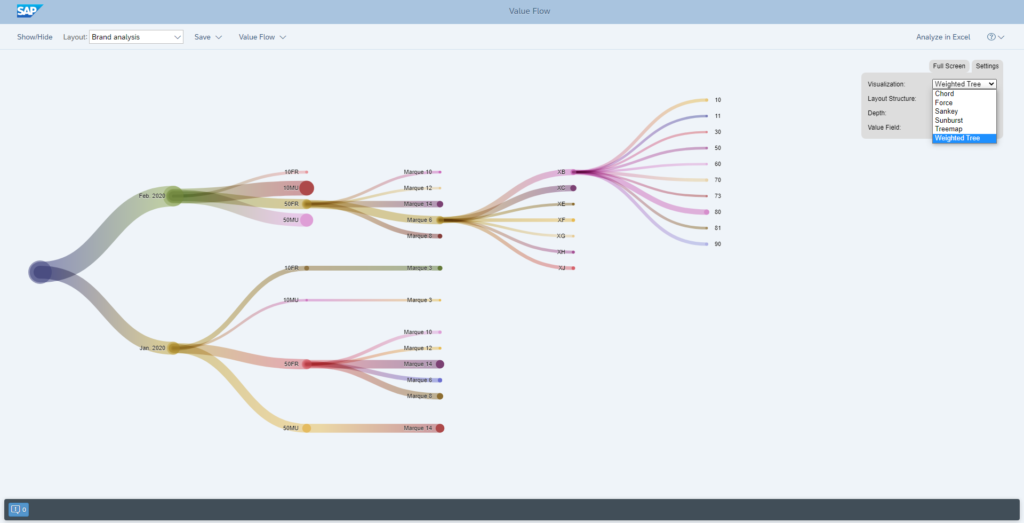
PaPM value flow example
PaPM gives users the ability to quickly configure solutions that can obtain and aggregate data from a variety of source systems and databases, to perform a variety of complex calculations up to low levels of granularity (using the power of the SAP HANA platform for optimal performance) and rewrite results in other applications (e.g. BW/4, BPC, S/4HANA) for further processing.
The modeling of the calculation and allocation rules is done via a Fiori web interface.
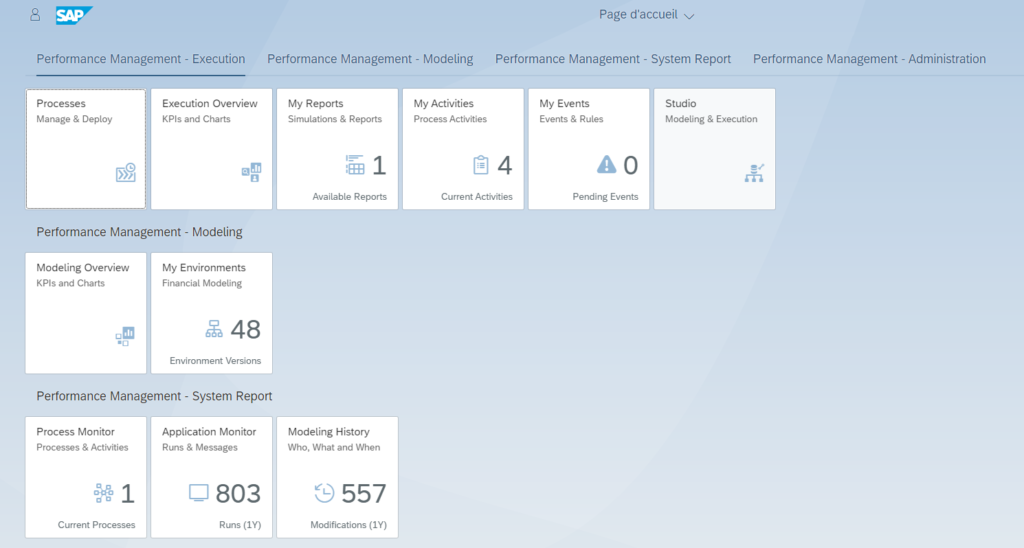
Interface Fiori PaPM
What are the business cases of SAP PAPM?
The computational possibilities offered by PaPM allow to cover very different business cases as presented by Olivier on the next slide.
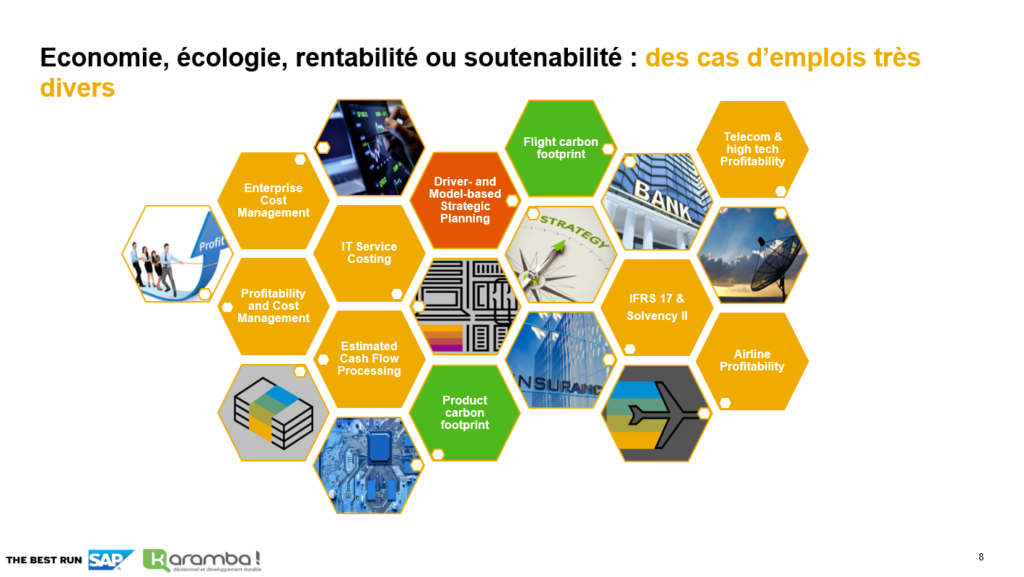
For example, PaPM allows:
- The allocation of marketing and promotion costs but also overheads up to very fine levels on the product and customer axes in order to:
- analyze your actual margins in each market
- prioritize the actions of your sales force
- to better target your marketing campaigns
- to better control the effect of your promotions
- Transparency of IT costs by dividing them between services, business units or subsidiaries through detailed drivers
- Calculating the full-cost cost-effectiveness of an airplane seat or hotel room
- The implementation of certain calculations required by IFRS 17 in the area of insurance contracts
- Calculating CO2 emissions at the company or factory level and allocating them to products in order to fine-tune the indirect share of their carbon footprint
But PaPM doesn’t stop at just doing calculations. It incorporates simulation, versioning and predictive functions.
In addition, auditability is at the heart of PaPM. An integrated tracking function allows for full transparency about the methods used to achieve the final result.
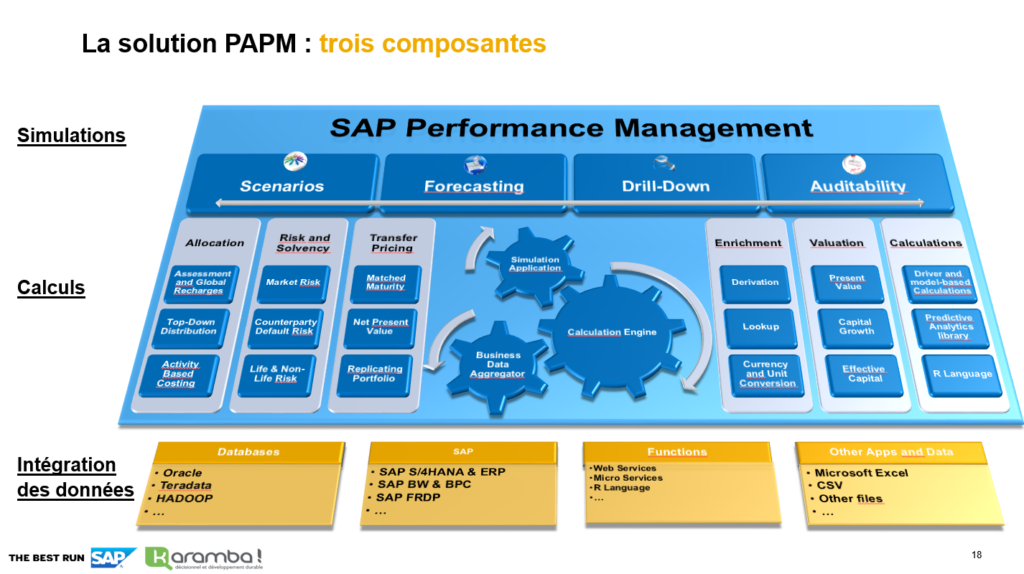
SAP PAPM, a modular solution
Within PaPM, the modeler builds the basic bricks, called functions, and assembles them to form his business process
- Environment and analysis axes
- Data sources/joins
- Entry or adjustment screens
- Validation points
- Calculations and allowances
- Reports
- Earnings/export storage
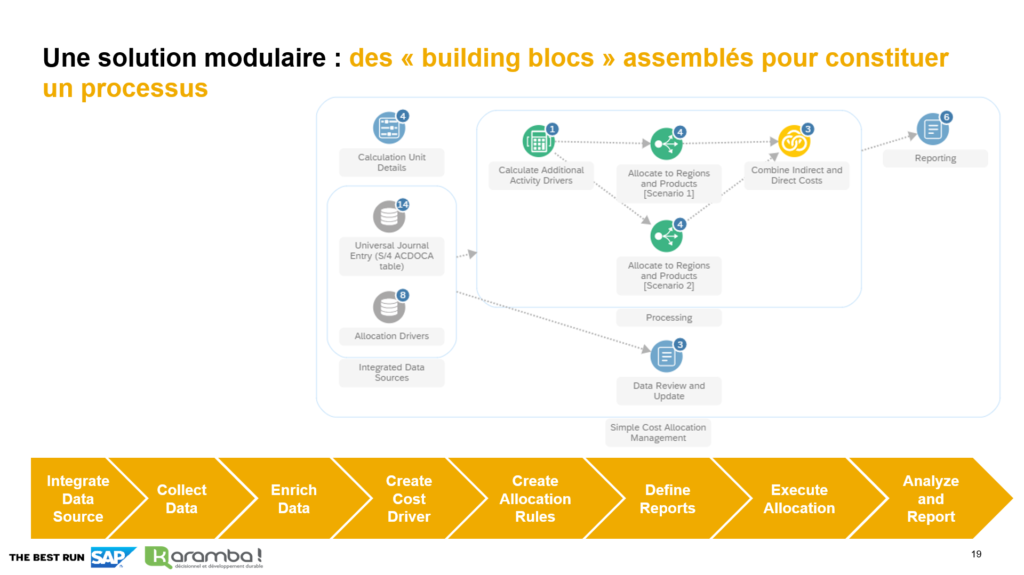
PAPM, a solution built into your SAP environment
Below are different architectures where you can see that PaPM can fit into your BW, BW/4 or S/4 HANA.
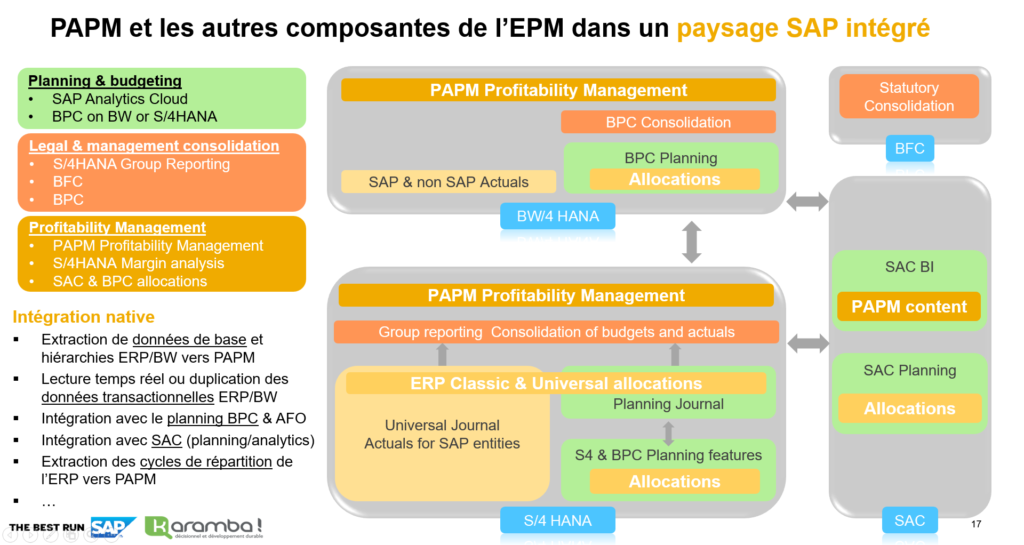
It was important to show that PaPM is an add-on that complements your architecture.
It complements your current solutions by connecting to your data, enriching/duging your S/4 allocations, your BPC calculations.
It offers the ability to simulate your assumptions before sending the result back to your systems.
We’ve seen that PaPM has reporting features, but it’s quite possible to use SAP Analytics Cloud to integrate these results into your dashboards.
Is there a PAPM preconfigured?
Yes, SAP provides different industry-preconfigured models for PaPM that can be found on the next slide.
These pre-configured can be real project accelerators.
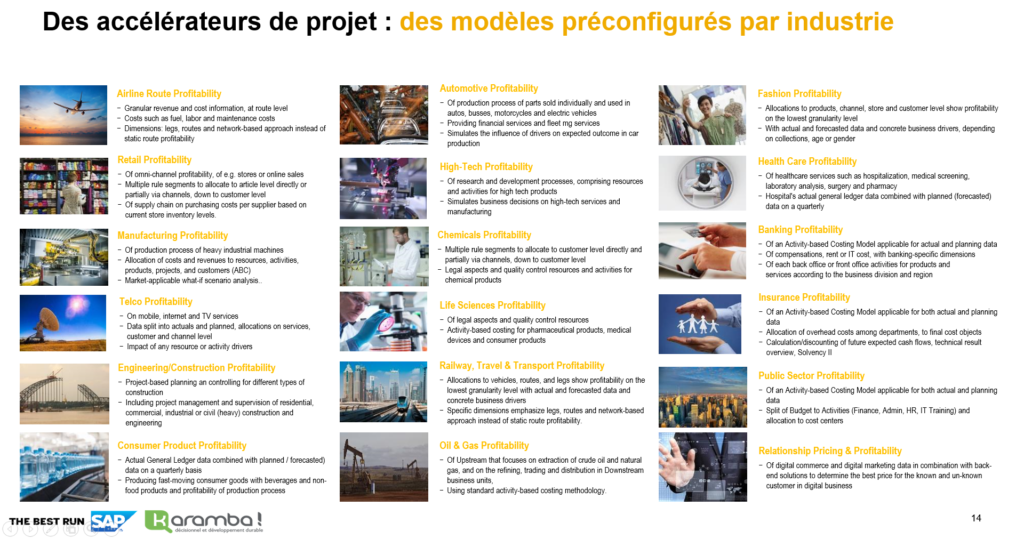
Replay of the webinar
Don’t hesitate to sign up for the replay to review this webinar and see the live demonstration of PaPM.


